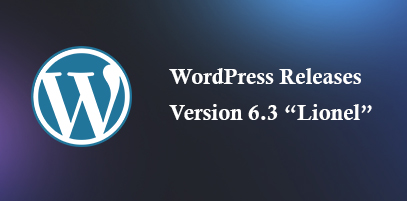Hybrid Cloud
By :- Ilika - Web Guru Awards Team

A hybrid cloud is an IT infrastructure that connects a minimum of one public cloud and a minimum of one non-public cloud and provides orchestration, management, and application movability between them to make one, flexible, optimum cloud atmosphere for running a company’s computing workloads.
Hybrid multicloud may be a hybrid cloud infrastructure that has quite one public cloud from quite one cloud service supplier. By enabling an organization to combine best-of-breed cloud services and practicality from multiple cloud computing vendors choose the optimum cloud computing atmosphere for every employee, and move workloads freely between public and personal cloud as circumstances modification
Hybrid cloud (and notably hybrid multicloud) helps an organization succeed in its technical and business objectives a lot of effectively and cost-efficiently than public cloud or non-public cloud alone. In fact, per one recent study, firms derive up to a pair of.5x the worth from hybrid cloud than from a single-cloud, single-vendor approach.
How do hybrid clouds work?
A hybrid cloud model permits enterprises to deploy workloads in-camera IT environments or public clouds and move between them as computing wants and price modification. this offers a business larger flexibility and a lot of knowledge preparation choices. Hybrid cloud employment includes the network, hosting associated net service options of an application.
While the terms are generally mentioned interchangeably, there are key variations between hybrid and multi-cloud models. A hybrid cloud creates one atmosphere to control each in on-premises, non-public resources, and publically cloud resources -- like those offered by AWS, Microsoft, and Google. A multi-cloud atmosphere consists of 2 or a lot of public cloud suppliers however doesn't need a non-public or on-premises part.
Hybrid cloud design
Uniform management of public and personal cloud resources is preferred to singly managing cloud environments as a result of doing therefore reduces the probability of method redundancies. severally managed environments increase the danger of security loopholes if every answer isn't totally optimized to figure with the others.
Hybrid design best practices eliminate several security risks by limiting the exposure of personal knowledge to the general public cloud.
Hybrid cloud infrastructure usually includes a public infrastructure as a service (IaaS) platform, a non-public cloud or knowledge center, and access to a secure network. several hybrid models leverage native space networks (LAN) in addition to wide space networks (WAN).
Businesses adopting a hybrid strategy usually begin with associate IaaS answers and extend functionalities to the non-public cloud. To deploy a hybrid strategy effectively, the general public and personal clouds should be compatible with one another so that they will communicate. In several cases, the non-public cloud is made to be compatible with the general public answer.
In recent years, IaaS suppliers like Amazon, Google, and Microsoft have created it easier for businesses to attach their native resources to a public cloud answer. Application programming interfaces (API) improve native ability between services. to boot, hybrid architects might deploy a hypervisor layer to come up with virtual machines that hook up with the general public cloud via another packaging layer liable for orchestration among cloud environments.
Why Hybrid Cloud?
Apps that will simply move to the cloud have already got. Meanwhile, 2 out of each 3 apps stay on-premises because of problems like knowledge gravity, sovereignty, compliance, price, and interdependencies with different systems. This leaves enterprises caught within the middle of recent and new, troubled to achieve their transformation goals among a fancy twin IT operational atmosphere.
Hybrid Cloud Advantages
Hybrid cloud computing permits the associate enterprise to deploy its most sensitive workloads in an associate on-premises cloud and to host less-critical resources on a third-party public cloud supplier. This approach permits organizations to induce the simplest of each non-public and public cloud model.
The core edges of hybrid cloud embody the following:
Flexibility: Users work with varied styles of knowledge in disparate environments and regulate their infrastructure. A corporation will build a hybrid cloud that works for its wants, victimization ancient systems additionally because of the latest cloud technology, while not a full commitment to a merchandiser. Organizations savvy with a hybrid cloud setup will migrate workloads to and from their ancient infrastructure and a vendor's public cloud whenever necessary.
Cost management: With a personal cloud, organizations own and operate the information center infrastructure, which needs vital capital expense and stuck prices. as an alternative, the general public cloud offers resources and services that are accounted as variable and operational expenses. Hybrid cloud users will additionally highly opt to run workloads in whichever setting is more value effective.
Agility and measurability: Hybrid cloud offers a lot of resource choices via a public cloud supplier vs. an associate degree organization's physical knowledge center. This makes it easier to provision, deploy and scale resources to satisfy demand spikes. once demand exceeds the capability of the native knowledge center, a company will burst the appliance to the general public cloud to access further scale and capability.
Resiliency and ability: to extend resiliency, a business will run workloads redundantly in non-public and public environments. parts of 1 employment can even run in each environment and interoperate.
Compliance: Compliance restrictions on wherever knowledge will reside mean organizations in extremely regulated industries cannot move all workloads to the general public cloud. With hybrid cloud, organizations will keep knowledge in an exceedingly non-public setting whereas operative workloads within the cloud, or they'll operate workloads in an exceedingly non-public knowledge center and move knowledge to and from the general public cloud PRN. this permits corporations to satisfy restrictive needs and still like the snap of the cloud.
Who uses a hybrid cloud?
Businesses across the spectrum of industries have rapt toward hybrid solutions to cut back prices and strain on native resources. From the money sector to the health care trade, hybrid cloud environments have well-tried to be effective at not solely rising computing and storage power, however additionally optimizing the scarce resource of physical area. several organizations merely do not have the space accessible to deploy servers on the spot.
In the health care area, knowledge privacy is overriding, and in-camera command computation resources are lacking. A hybrid cloud model is a perfect answer as a result of it permits medical teams to retain patient knowledge in an exceedingly secure, non-public server whereas at the same time investing the advanced procedure power of a public IaaS model. Simply put, any trade that edges from public cloud applications can even like the hybrid model.
How is hybrid cloud managed?
Managing a hybrid cloud may be a complicated task as a result of every cloud answer has its own API, storage management protocols, networking capabilities, etc. Mastering every solution's complexities is feasible, however maybe not properly. For that reason, professionals chargeable for hybrid cloud management typically construct one interface to manage all cloud services seamlessly.
Building such an associate degree interface needs a team that's at home with handling cloud solutions and obtaining disparate networks to speak effectively. luckily, enterprise-grade management tools are accessible to assist IT managers get their systems up and running.
Recent Topics
-
 WordPress.com Launches 100-Year Web Hosting Plan
WordPress.com Launches 100-Year Web Hosting PlanWordPress, the platform that helps people create websites, now offers something rare. It has taken a bold leap into the future with its 100-year web hosting plan. ...
Read MoreBy :- Laura Davidson
-
 5 Best AI Web Design Tools You Can Try
5 Best AI Web Design Tools You Can TryWhy bother with all the effort of creating websites manually when we have amazing AI tools? In fact, using these tools has become one of the most-practiced ...
Read MoreBy :- Tiana K
-
 Role of Animation and Micro-Interactions in User Experience
Role of Animation and Micro-Interactions in User ExperienceIn today's world, almost every brand wants to create a user-friendly interface for its customers. The main aim behind this is to increase customer base and revenue. Now, when it comes...
Read MoreBy :- Laura Davidson
-
 Web Design Trends to Watch Out for in 2024
Web Design Trends to Watch Out for in 2024Web design is a constant-evolving technology landscape. As a web designer, staying tuned with web design trends and keeping your designs up-to-date is important. These trends will affect ...
Read MoreBy :- Esther McGuinness
-
 The Power of Storytelling in Web Design Engaging Users with a Narrative
The Power of Storytelling in Web Design Engaging Users with a NarrativeStories never fail to engage listeners. That’s why web designers are leveraging the art of storytelling in their designs. In web designing, storytelling goes beyond merely usin...
Read MoreBy :- Navkiran Dhaliwal
-
 WordPress Releases Version 6.3 ?“Lionel”
WordPress Releases Version 6.3 ?“Lionel”WordPress 6.3 “Lionel” is out! Now, you’ll be able to create more beautiful and compelling websi...
Read MoreBy :- Tiana K
